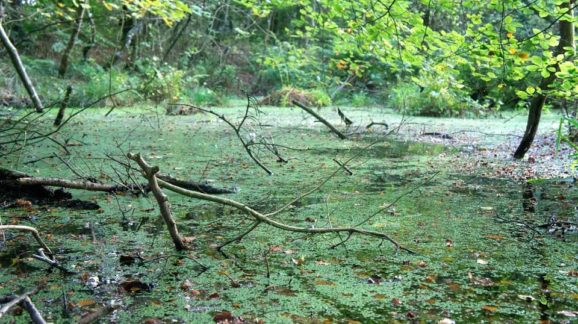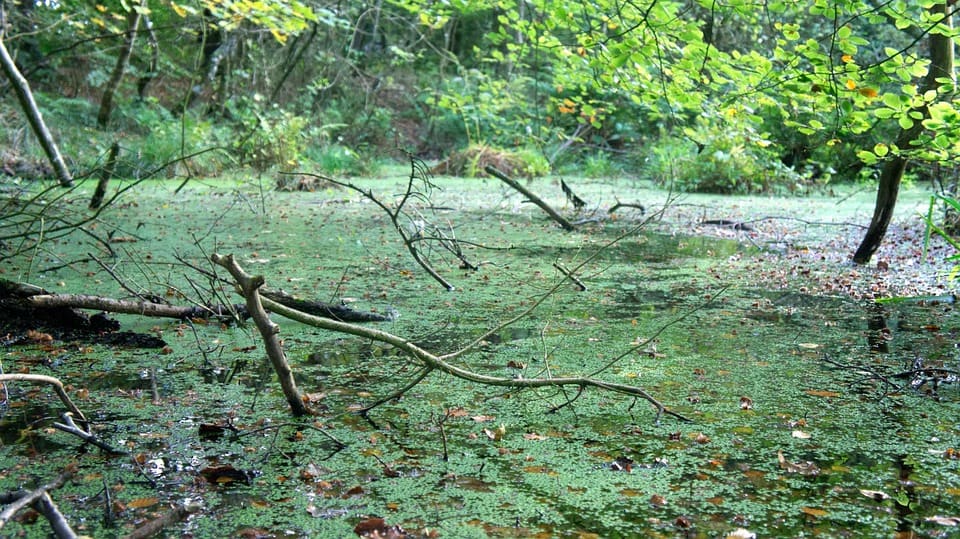Amend Clean Water Act, Restore Private Property Rights

 On Tuesday, June 27, the Trump Administration took the long-awaited first steps to repealing the unconstitutional misuse of the Clean Water Act (CWA) of 1972 to regulate, control, and take private property. Instead of using the CWA to protect the nation’s navigable waters, the federal government has long been using the Act for national land-use control.
On Tuesday, June 27, the Trump Administration took the long-awaited first steps to repealing the unconstitutional misuse of the Clean Water Act (CWA) of 1972 to regulate, control, and take private property. Instead of using the CWA to protect the nation’s navigable waters, the federal government has long been using the Act for national land-use control.
The Environmental Protection Agency and the Army Corps of Engineers announced that they have taken action to repeal the Waters of the United States (WOTUS) rule in which EPA had given itself unlimited control and power over all private lands and waters. And they are opening a comment period to review and revise the WOTUS rule.
The CWA, building on the Constitution’s Commerce Clause protection of navigable waters and the Rivers and Harbor Act of 1899, gave the federal government the authority to regulate the obstruction and fill of navigable waters. The operational term was “navigable waters” and this meant for vessels engaged in commerce.
But as Lord Acton so eloquently pointed out, “Power tends to corrupt, and absolute power corrupts absolutely.” Soon, “navigable” waters and rivers became tributary streams, creeks, and even irrigation runoff ditches. Regulatory agencies began to control the use of private lands and waters that were merely adjacent to navigable waters, and then ever-farther afield until it had placed a straightjacket of regulatory control over lands that only became wet during rainy seasons or following prolonged storms. Rules that had once covered commercial ocean-going vessels and barges were extended to small motorboats, canoes, kayaks, and even recreational rafts and tubes. Everything but rubber duckies.
In order to conduct the most elementary land use actions, farmers, home builders, and tree farmers would have to run a gauntlet of lengthy, costly, and uncertain efforts to receive a permit. This delayed necessary activities and raised costs substantially, imposing impossible regulatory demands, loss of use of lands and waters, and substantial penalties. Federal officials imposed these requirements on property owners while providing zero compensation for the takings.
Individual landowners were threatened with fines and jail time for plowing farm fields that they had farmed for decades. Small landowners were prevented from building their own homes on their own lots because the bureaucracy had decided their lands were part of the “waters” of the United States. And slowly the courts began to fill with takings cases against the federal government.
But in spite of a number of important Supreme Court decisions seemingly reining in control of the government’s nonstop expansion of navigable waters, the federal bureaucracy accelerated its attack on private property rights and private landownership.
The American Farm Bureau Federation reported that some 250 million acres of cultivated farmland alone was subject to such bureaucratic control. That’s an area two and a half times the size of California. And that is just agricultural row-crop lands. Much of the rest of the nation’s privately owned land was under the same Sword of Damocles.
Hopefully the Trump administration’s review and revision of the EPA’s staggering expansion of its mandate to protect “navigable waters” will return its authority to its proper and constitutional scope.
Meanwhile, it is past time for the U.S. Congress to revisit the CWA and amend it to state clearly and unambiguously that “navigable” means “navigable.” And by commercial ships, not by inner-tube floaters on small scenic creeks. Nor by a few leaves washing down a driveway during a rainstorm and into a ditch or sewer.